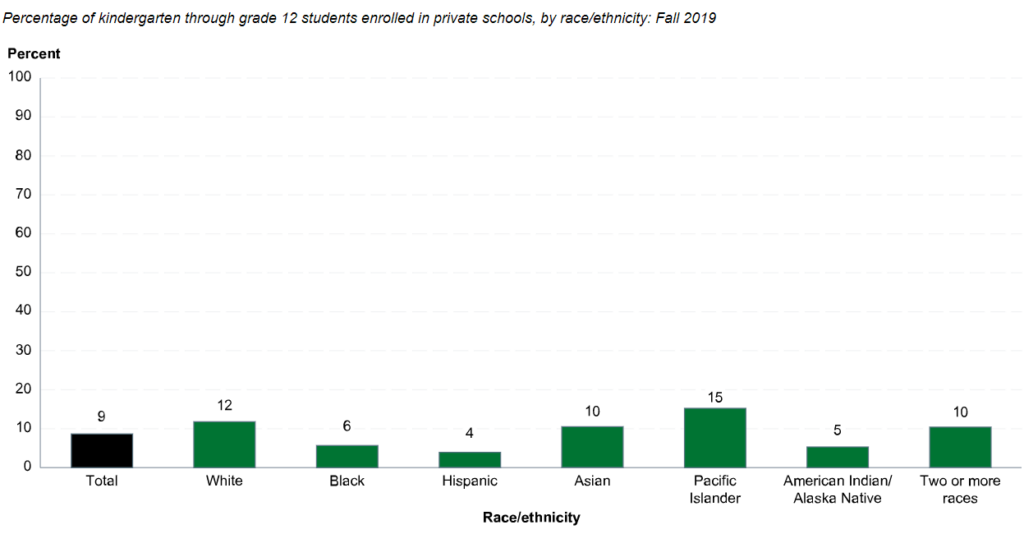
Moonpreneur
Getting your kids enrolled in any desired school can be a strenuous task. There will be divided opinions as to which one would be the best option for your child- a public school or a private one. As per the NCES data, as many as 49.4 million students got enrolled in public schools in 2019 across the USA. On the other hand, about 4.7 million kids joined private schools in the same year.


Source: National Center For Education Statistics
There are multiple factors that parents must consider before finally making a choice. Apart from these factors, the individual needs of your children also matter to a great extent. Since each child is different, you must proceed accordingly so that you can cater to their requirements and expectations seamlessly.
Recommended Reading: Is Private School Tuition Tax Deductible?
This blog walks you through the different factors that you must consider while taking this significant decision for the future of your kids. Scroll down and dive deeper into the details.
Private or Public Schools- What’s Best for Your Children?
1) Expenses
If you wish your kids to do schooling from any private school, then expect skyrocketed education fees and prepare your budget accordingly. The tuition fee may range anywhere between $6000 to $30,000 per annum. You can consider this expenditure as a sort of investment in your children.
On the other hand, public schools seem to be an affordable option. Although they do not offer absolutely free of cost education, you can avail of a majority of the educational facilities for free. This is so because public schools are funded by the Federal government. They depend on the taxpayers’ money to run their educational institutes.
2) Admission process
Private schools have an elaborate admission process, which includes academic assessments, applications, personal interviews and so on. And the admission process takes a considerably long time. The criteria that they consider while accepting student applications are student conduct, academic appetite, previous performance of the students and many other factors.
On the contrary, public schools offer equal education to all students despite their religious creed, academic background/profile, developmental level etc. The overall admission process is smooth and hassle-free.
Recommended Reading: Is Private School Worth It?
3) Demography
Students join private schools from far and near. Because of the transportation facility provided by the school authority, parents from further locations do not hesitate to send their children to these schools. Thus it won’t be wrong to say that private schools receive students from a broader radius.
Public schools generally cater to the educational requirements of neighborhood students.
4) Curriculum
Private schools are not dependent on federal government bodies or public funds for day-to-day operations. So, they get a free hand to expand their curriculum and educational programs. They do not have to comply with the legislative mandates. Thus, the standard of their curriculum is much higher than that of public schools.
Since public schools receive public funds, they have to follow the norms and regulations of the state and impart education accordingly. They operate under the regulations of the State and follow all the procedures and policies as dictated by the district office.
5) Extra-curricular activities
Private schools keep their students engaged in different extra-curricular activities. They focus on education beyond books and the four walls of classrooms. Generally, these schools run clubs (math and science club, robotics and AI club, creativity clubs etc.) for extra-curricular activities. These clubs are well-managed by school authorities and have proper structure and maintenance.
Public schools allow students to come up with clubs quite effortlessly. There are no hard and fast rules and regulations. So, students in public schools can easily participate in different types of extracurricular activities. However, these clubs are not under strict regulations and do not follow any proper structure. So, there can be certain instances of mismanagement.
6) Class Size
Private schools generally have a small class strength of 15 to 25 students. As a result, students get to interact with the teachers actively. And the engagement level will also be high. On the contrary, public schools have a greater number of students. While this allows students to mingle with a large number of people, it may affect the student-to-teacher ratio.
7) Student support
While private schools offer a diversified support system for their students, public schools turn out to be not so supportive. The former have bigger teams, and that’s why they can look after multiple administrative departments and offer quality support to the students.
Public schools tend to work with smaller teams and are not quite accessible when it comes to student support systems.
Wrapping Up!
The battle between public and private schools will always go on. Consider these factors as well as keep in mind the requirements of your children. As a parent, it is your responsibility to get your kids enrolled in the right school so that their educational journey is seamless and hassle-free. Follow this blog to make a well-informed decision towards shaping the future of your children.
Moonpreneur understands the needs and demands this rapidly changing technological world is bringing with it for our kids and thus we are on a mission to educate and ignite the flames of entrepreneurship through our holistically created online STEM programs which will help kids master the futuristic sciences such as Robotics, Game Development, App Development, Advanced Math and much more!!
Register for a free 60-minute online class today!










